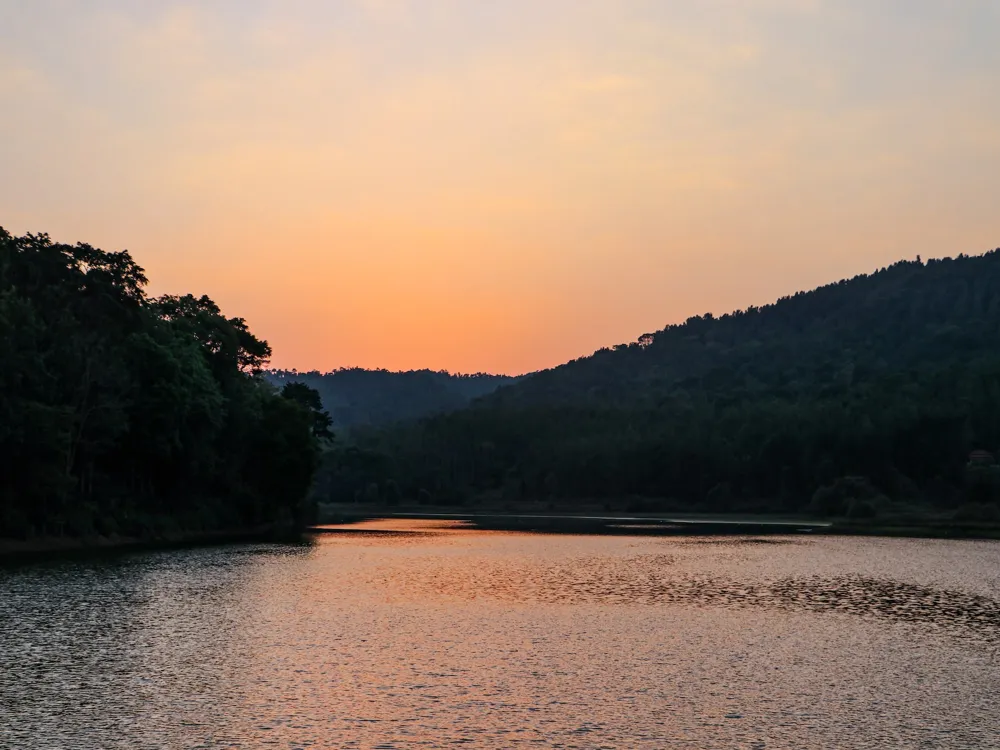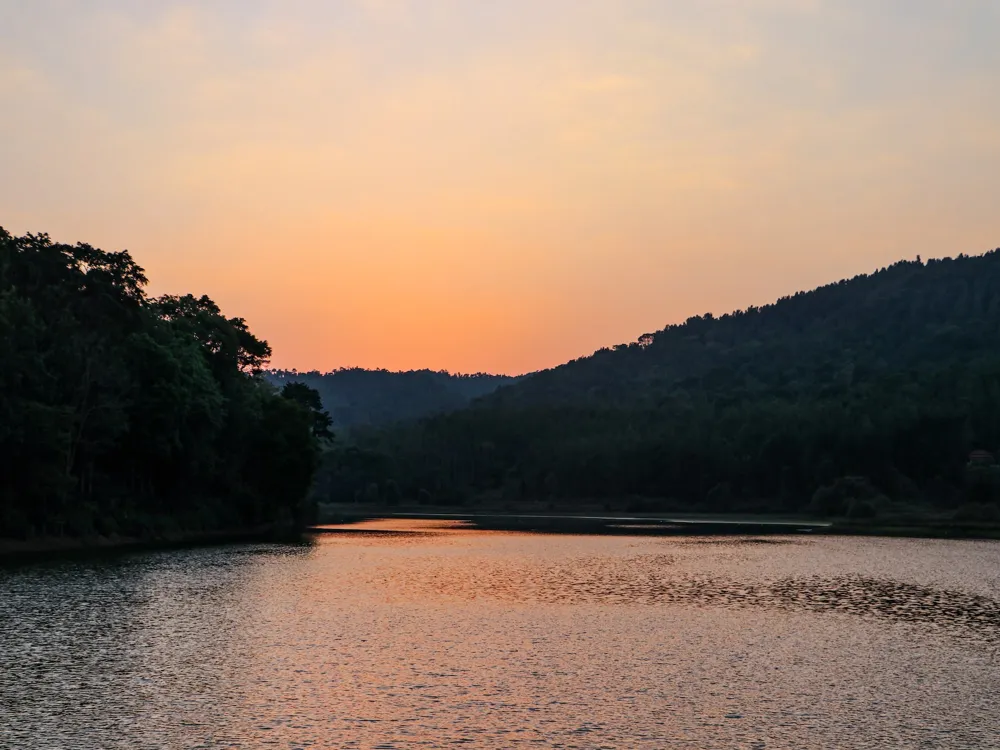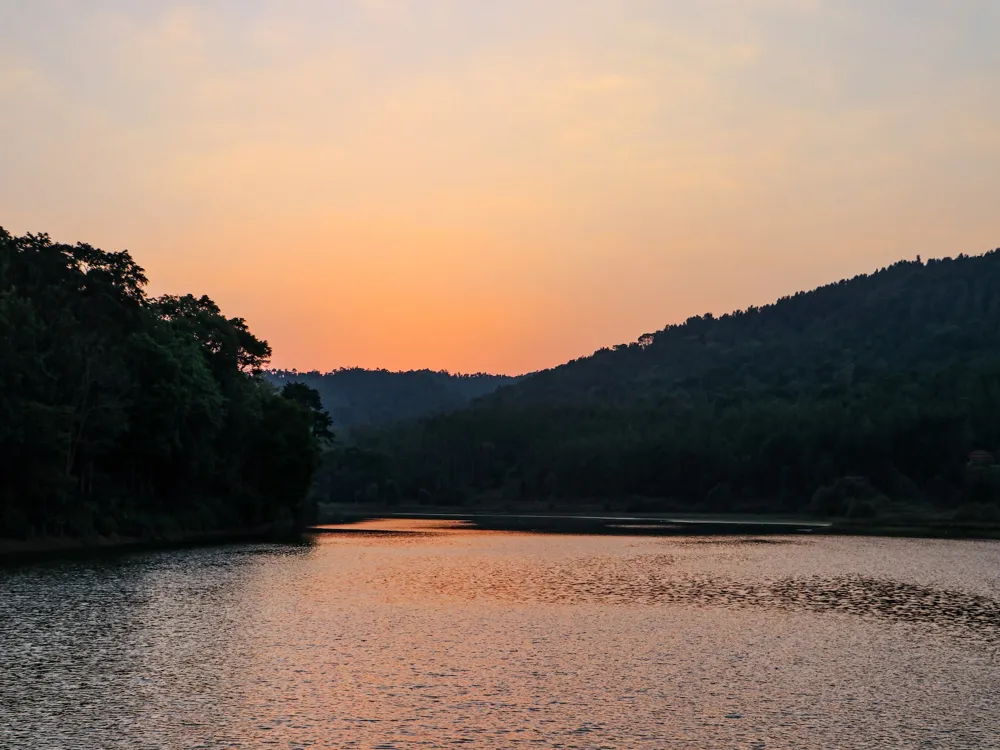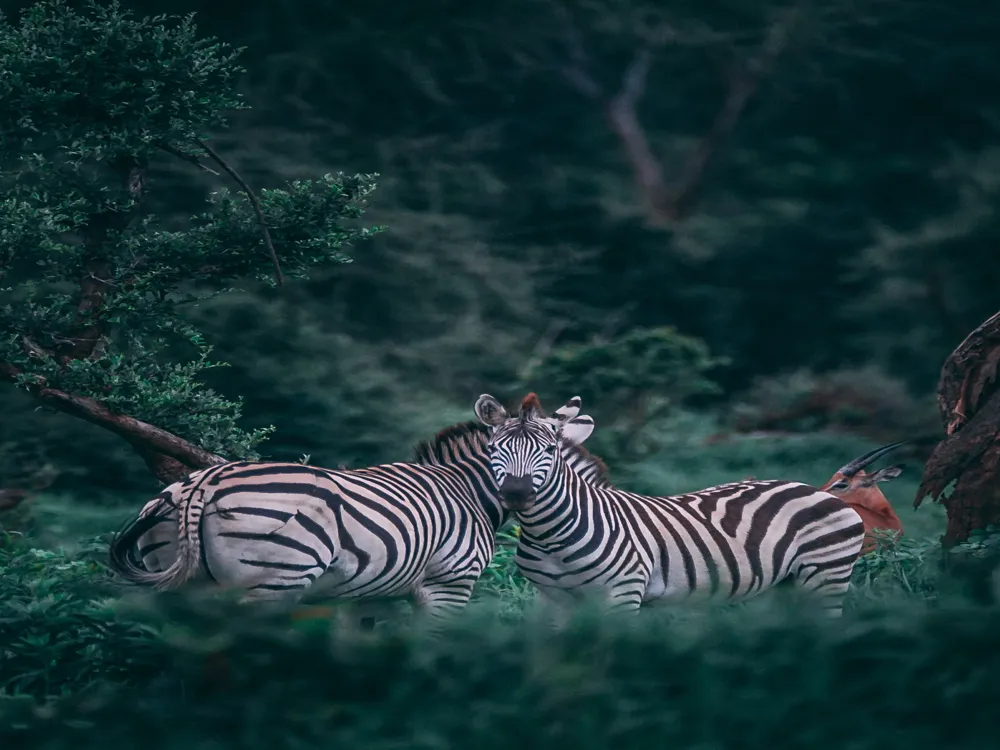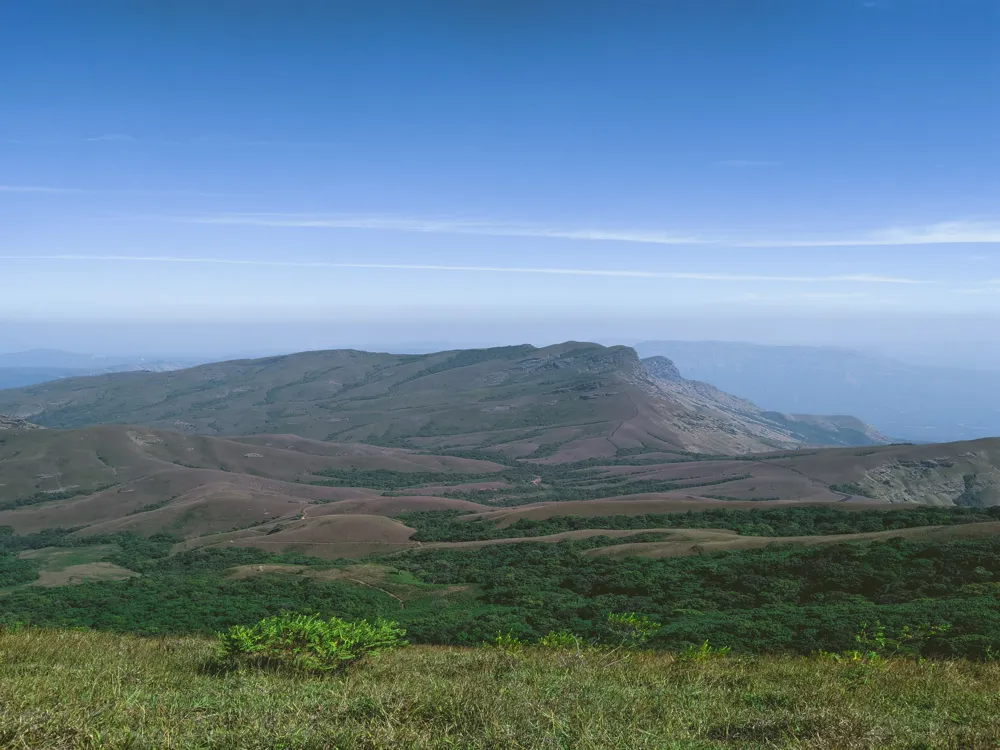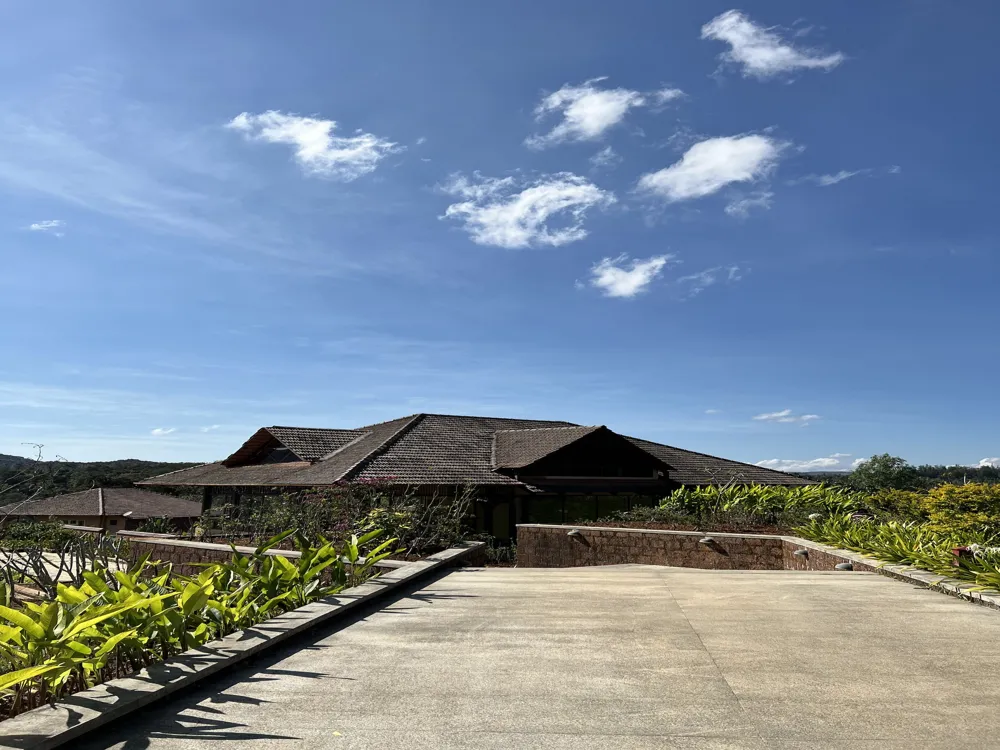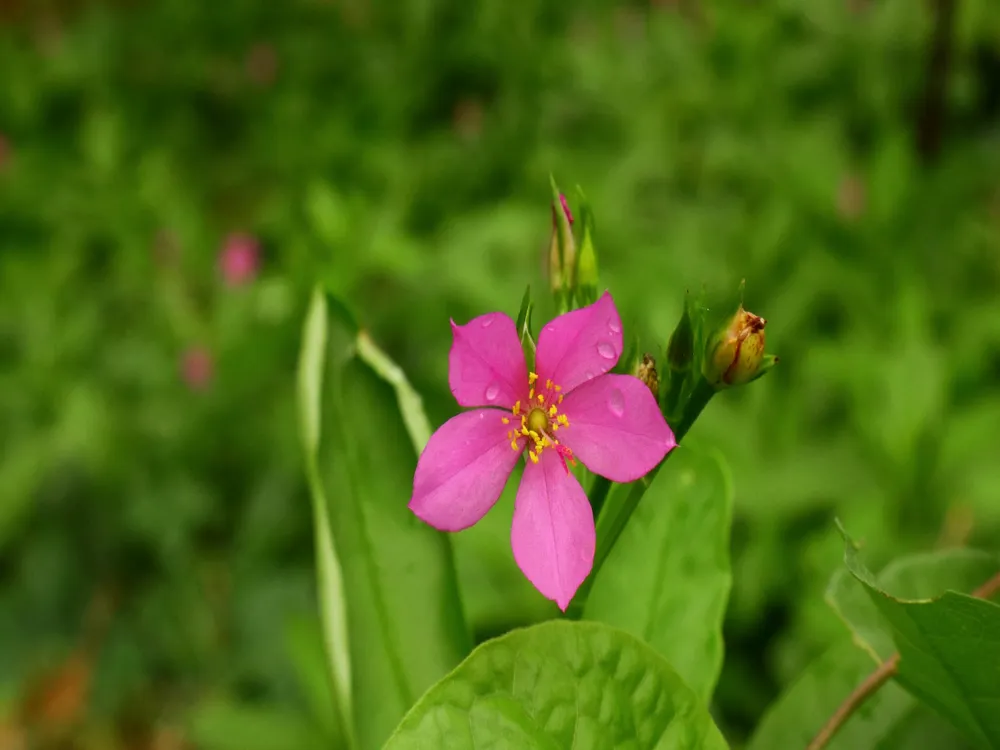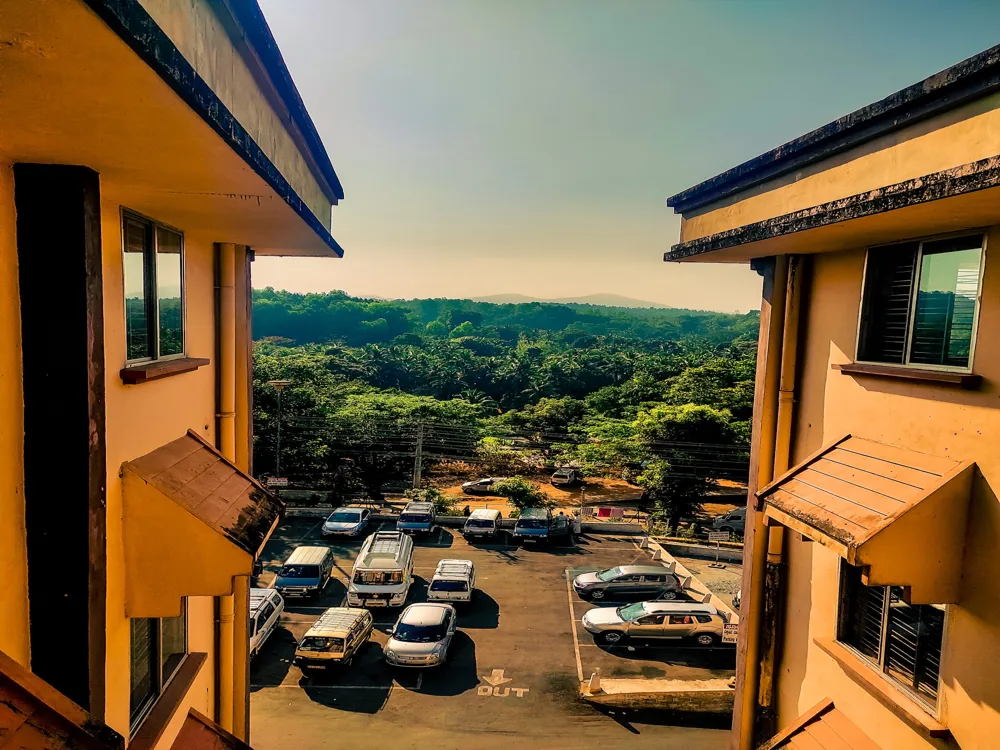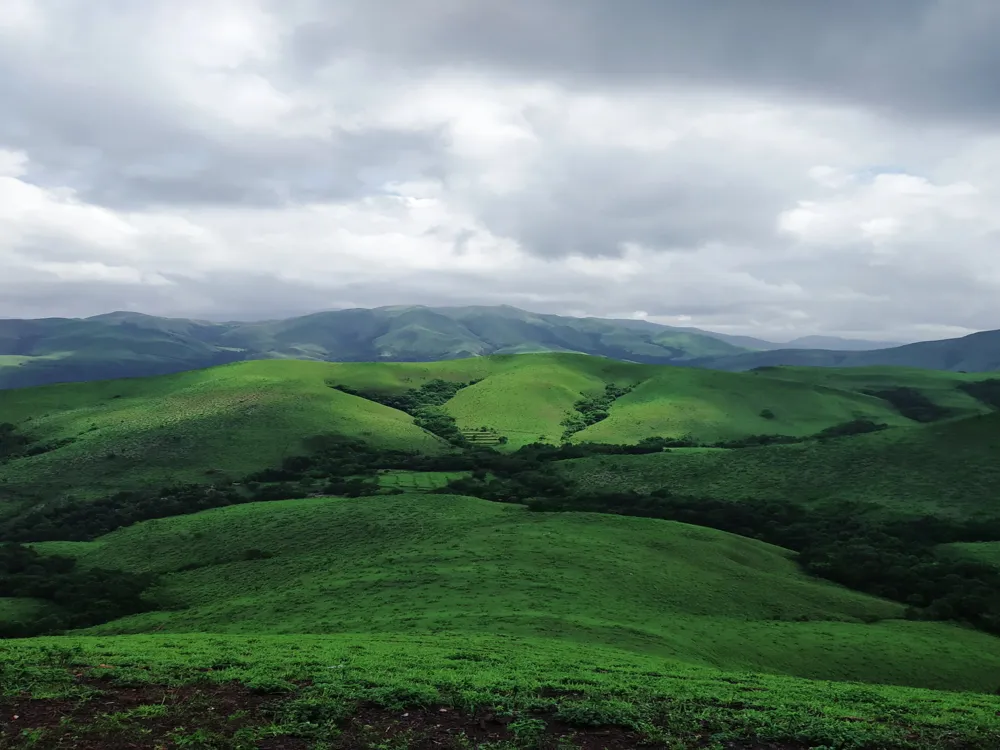Nestled in the Western Ghats of Karnataka, India, Chikmagalur is a serene hill station renowned for its breathtaking landscapes and rich cultural heritage. Often referred to as the 'Coffee Land of Karnataka', it's the place where coffee was first cultivated in India. Chikmagalur, translating to 'younger daughter's town' in the local language Kannada, is replete with lush green forests, tall mountains, and tranquil rivers, making it a perfect retreat for nature lovers and adventure enthusiasts alike.
The history of Chikmagalur dates back to the early centuries, with its first significant historical reference appearing in the 1678 A.D. during the rule of the Sakharayapatna chieftains. Over the years, it has been influenced by various dynasties like the Hoysalas, the Vijayanagara Empire, and the British Raj, which have left an indelible mark on its culture and architecture. Today, Chikmagalur stands as a testament to its diverse history and natural beauty, attracting thousands of tourists every year.
The region's climate is another draw, with its cool, pleasant weather persisting throughout the year. This climate, along with the fertile soil, makes Chikmagalur an ideal location for coffee cultivation, which is the mainstay of its economy. The coffee estates here are not just agricultural lands, but have transformed into beautiful tourist destinations offering a glimpse into the life of coffee growers and the process of coffee making.
Apart from coffee, Chikmagalur is also known for its wildlife. The Bhadra Wildlife Sanctuary, Kudremukh National Park, and the Western Ghats region offer opportunities for wildlife sighting and bird watching. The area is a biodiversity hotspot, housing many rare species of flora and fauna.
Spirituality and religion also play a significant role in the local culture. The region is dotted with ancient temples like the Sringeri Sharada Peetha, one of the most revered Advaita Vedanta centers established by Adi Shankaracharya, and the Horanadu Annapoorneshwari Temple, attracting pilgrims from across the country.
Chikmagalur is not just about nature and religion; it's also a hub for adventure activities. Trekking to the Mullayanagiri peak, the highest in Karnataka, is a popular activity. Other adventure sports like river rafting, mountain biking, and camping are also widely enjoyed here.
The architecture of Chikmagalur is a fascinating amalgamation of various styles influenced by the numerous dynasties that have ruled the region. The most prominent among these are the Hoysala and Dravidian architectural styles, which are evident in the ancient temples and monuments scattered across the district.
The Hoysala architecture, dating back to the 12th and 13th centuries, is known for its intricate carvings and detailed sculptures. This style is characterized by star-shaped temples with finely carved exteriors and soapstone decorations. The Amruteshwara Temple at Amruthapura and the Veera Narayana Temple in Belavadi are prime examples of this style, showcasing the skilled craftsmanship of the Hoysala artisans.
The Dravidian style, which developed in the 5th century, is marked by its pyramidal towers and pillared halls. Temples built in this style often feature elaborate gopurams (gateway towers) and are constructed using granite. The Sringeri Sharada Peetha with its majestic gopuram reflects the grandeur of Dravidian architecture and is a must-visit for those interested in historical and architectural heritage.
Besides these, Chikmagalur also houses colonial architecture from the British era, visible in the bungalows and plantations houses spread across the coffee estates. These structures, built during the 19th and early 20th centuries, exhibit British architectural styles and offer a glimpse into the colonial history of the region.
The architecture of Chikmagalur is not just limited to temples and colonial buildings. The traditional houses of the local Malnad region are also unique. These houses are built using local materials like mud and wood and are designed to suit the wet, hilly terrain of the Western Ghats. The Malnad houses, with their distinctive style, represent the harmony between architecture and nature, characteristic of Chikmagalur's ethos.
The best time to visit Chikmagalur is between September and May, when the weather is pleasant, making it ideal for sightseeing and outdoor activities. The monsoon season, from June to September, though beautiful, can be challenging due to heavy rainfall and landslides.
Chikmagalur offers a range of accommodation options, from luxury resorts and homestays in coffee estates to budget hotels and hostels. Booking in advance is recommended, especially during peak tourist seasons.
Don't miss out on the local Malnad cuisine, which is known for its rich flavors and variety. Dishes like Akki Roti (rice roti), Kadubu (rice dumplings), and Malnad style chicken curry are a must-try.
Renting a car or bike is the most convenient way to explore Chikmagalur, as public transport options are limited. Hiring a local guide or driver who knows the region well can also enhance the experience.
Respect the local culture and traditions, especially when visiting religious sites. Dress modestly and ask for permission before photographing people or private properties.
Chikmagalur is well-connected by road to major cities like Bangalore, Mangalore, and Mysore. The nearest airport is in Mangalore, about 150 kilometers away, while the closest railway stations are in Kadur and Hassan. From these points, one can hire taxis or take buses to reach Chikmagalur. The journey through the Ghats is scenic, offering travelers a glimpse into the natural beauty that awaits them in Chikmagalur.
Overview of Chikmagalur, Karnataka
Architecture of Chikmagalur
Tips When Visiting Chikmagalur
Best Time to Visit
Accommodation
Local Cuisine
Transportation
Local Culture and Etiquette
How To Reach Chikmagalur
Coffee Plantations
Chikmagalur
Karnataka
NaN onwards
View chikmagalur Packages
Weather :
Tags : Farms & Plantations
Time Required : 1 - 2 hrs
Planning a Trip? Ask Your Question
Chikmagalur Travel Packages
View All Packages For Chikmagalur
Top Hotel Collections for Chikmagalur

Private Pool

Luxury Hotels

5-Star Hotels

Pet Friendly
Top Hotels Near Chikmagalur
Other Top Ranking Places In Chikmagalur
View All Places To Visit In chikmagalur
View chikmagalur Packages
Weather :
Tags : Farms & Plantations
Time Required : 1 - 2 hrs
Planning a Trip? Ask Your Question
Chikmagalur Travel Packages
View All Packages For Chikmagalur
Top Hotel Collections for Chikmagalur

Private Pool

Luxury Hotels

5-Star Hotels

Pet Friendly







